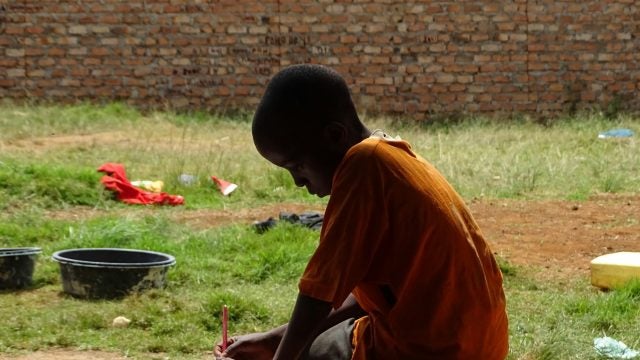Title: The Deradicalization of Islamists
Although there has been a great deal of research on radicalization of extremists, not as much work has been done on the deradicalization of those who have been recruited into extremist movements and organizations.[1] Yet, just as there are processes through which an individual becomes an extremist, so too are there processes through which an extremist comes to renounce violence, leave the group or movement, or even reject the radical worldview. Moreover, there is reason to believe that deradicalization is not merely the radicalization process in reverse. Deradicalization appears to have its own distinct features—some of which are quite different from the factors associated with the initial radicalization.
The probability that an individual will disengage or deradicalize appears to be inversely related to the degree of commitment to the group or movement. Commitment can be measured in terms of affective, pragmatic, and ideological bonds. Affective commitment is an emotional attachment to the other members of the organization and to the group itself. Pragmatic commitment refers to the practical factors that make it difficult to exit a radical organization, such as material rewards and punishments. The ideological component justifies the actions that the militant is asked to take and the hardships he must endure to achieve the group’s objectives.
In this regard, leaving an ideologically based radical Islamist group is not the same as leaving a criminal group or a gang, which are essentially non-ideological entities. Leaving an Islamist group implies the rejection of the radical ideology, or of essential parts of the ideology, particularly the individual obligation to participate in the armed struggle against alleged oppressors of Islam. It follows that even if a militant is inclined to leave the group for other reasons, the articulation of theologically grounded imperatives for renouncing violence by credible authorities is an important factor in catalyzing the decision to leave the group.
Most Middle Eastern and Southeast Asian programs employ a form of theological dialogue in which mainstream religious scholars and sometimes former radicals engage extremists in discussions of Islamic theology in an effort to convince the militants that their interpretation of Islam is wrong. However, the content of the theological dialogue in some of these programs should be treated with caution. Because the priority of some of these governments is combating the domestic terrorist threat, the emphasis of those programs is the inadmissibility of domestic terrorism (on the basis that the government is Islamic or that the country is not under occupation), but they may condone it abroad in zones of conflict such as Iraq and Afghanistan. This approach might address the immediate security needs of the country in question, but does not truly deradicalize the militants.
The success of these programs hinges upon the ability of the state to find credible interlocutors who develop relationships with the imprisoned militants and use their legitimacy and personal ties to convince the radicals of the error of their ways. Even if credible interlocutors can be found, rehabilitation programs cannot rely solely upon religious debates to reform the detainees. It is clear that prison-based rehabilitation programs cannot rely solely upon religious debates to reform the detainees. Dialogue alone does not break the militants’ affective and practical ties to the radical movement or equip them with the skills to become self-reliant, productive members of the community.
To ensure that militants remain disengaged, deradicalization programs need to continue to monitor the former detainees and offer extensive support after their release. In particular, after-care programs should include placing the ex-radical in a supportive environment and facilitating his reintegration into society. The best-designed rehabilitation programs (for instance, that of Singapore) continue to offer and sometimes require theological and psychological counseling for those who have been released. The continued interaction with a credible interlocutor provides emotional support, helps to dispel doubts, and ensures that behavioral and ideational changes endure.
Assessing the effectiveness of disengagement and deradicalization programs is very difficult because, for the most part, the programs do not have an accurate way to measure success. Nevertheless, it is possible to identify best practices. The most effective programs address all three components of the militant’s commitment to the extremist group: the affective, ideological and pragmatic components. Deradicalization processes are localized and culture-bound and specific to the environments in which militants operate. Therefore, deradicalization approaches need to be tailored to the context and the particular circumstances that produced or facilitated the initial radicalization.
Dr. Angel M. Rabasa is a Senior Political Scientist at the RAND Corporation who has written extensively about extremism, terrorism, and insurgency. He is the lead author of Deradicalizing Islamist Extremists (2010), The Lessons of Mumbai (2009); Radical Islam in East Africa (2009); The Rise of Political Islam in Turkey (2008); Ungoverned Territories: Understanding and Reducing Terrorism Risks (2007); Building Moderate Muslim Networks (2007); Beyond al-Qaeda, Part 1: The Global Jihadist Movement and Part 2: The Outer Rings of the Terrorist Universe (2006); The Muslim World After 9/11 (2004), and other works. Dr. Rabasa has a B.A. and Ph.D. in history from Harvard University and was a Knox Fellow at St. Antony’s College, Oxford University. He is a member of the International Institute for Strategic Studies (IISS), the International Studies Association, and the American Foreign Service Association.
Read Dr. Anne Speckhard’s response here.
This is an archived article. While every effort is made to conserve hyperlinks and information, GJIA’s archived content sources online content between 2011 – 2019 which may no longer be accessible or correct.
[1] Over the past two to three years, there have been some efforts to understand these processes, most notably the volume Leaving Terrorism Behind, edited by Tore Bjorgo and John Horgan, Leaving Terrorism Behind, the International Centre for the Study of Radicalisation’s Prisons and Terrorism: Radicalisation and De-radicalisation in 15 Countries and the RAND Corporation report, Deradicalizing Islamist Extremists. The International Centre for Political Violence and Terrorism Research (ICPVTR) at the S. Rajaratnam School of International Studies in Nanyang Technological University in Singapore hosted a conference in 2009 that helped to provide a global perspective on efforts to rehabilitate terrorists and insurgents.
More News

The 1997 hijab ban in Türkiye left lasting effects on Muslim women’s psychological, social, and religious identities, shaping their experiences across academia, bureaucracy, and politics. Evidence from interviews…

This article advances the idea that teaching children their mother tongues and learning adjacent national languages offers better prospects for consolidating nation-building and contributing to cultural preservation. Kenya’s case illustrates…

Despite the non-political positioning of its organizing body, the European Broadcasting Union, the Eurovision Song Contest plays an important role in shaping how the public imagines and understands ideas of…